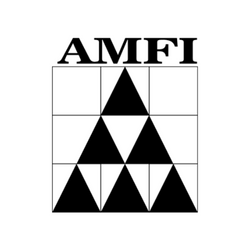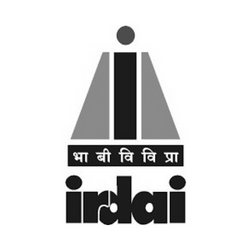AVIATION INSURANCE
We provide hull and aircraft liability coverage for all types of aircrafts from private & corporate jets , helicopters, commercial aviation aircrafts & fleets to flying club training aircrafts ,flight simulators etc. through the leading insurance companies of India.
Aviation insurance unlike other general insurance is a highly specialized field designed to meet general aviation needs.
While the Aviation Insurance Policy is not standardized, the insurance contract contains many adaptations of other familiar general insurance forms – specifically fire and automobile. Some insurers underwrite aviation insurance using their own contracts. Others participate in one of the several aviation pools or underwriting groups specializing in writing aircraft insurance exclusively. Since the loss exposure is substantial, relative to the number of aircraft insured and because of the highly specialized underwriting involved, most insurance companies prefer to combine their exposure in this field to participate in one of the several aviation pools or underwriting groups specializing in writing aircraft coverages. Adequate insurance facilities now exist for handling most aviation risks. Due to the highly specialized problems and the potentially catastrophic losses, it is imperative that adequate market capacity for aviation insurance be available.
Aircraft Hull Policies
There are roughly five different types of aviation insurance, that are taken out individually or in combination:-
- Public liability insurance.
- Passenger liability insurance.
- Ground risk hull insurance not in motion.
- Ground risk hull insurance in motion.
- In-flight insurance.
Insuring Agreement
The policy contains three insuring agreements to pay for “any physical damage” :-
- Open peril basis – includes disappearance.
- Open peril basis, not in flight – covers the plane when on the ground, but does not include fire or explosion following a crash.
- Open peril basis, not in motion – covers the plane while standing still, but again does not include fire or explosion following a crash.
Deductible
The deductible does not apply to losses from fire, lightning, explosion, transportation, theft, robbery, or pilferage. However, the “in-motion” deductible does apply to losses from fire or explosion that occurs as a result of the collision of the aircraft. The deductible applies separately to each aircraft insured on the policy. Note that the policy calls for two different deductibles: one for when the aircraft is in motion; a second for when the aircraft is not in motion.
The deductible is normally expressed as a percentage of the value. Most aircraft hull policies are “valued policies” which provides that, in the event of a total loss, the company will pay the insured value stated in the policy, regardless of the aircraft’s market value. Some policies are written on an actual cash value or replacement cost basis.
Few Inclusions and Exclusions in aviation insurance policy
Inclusions | Exclusions |
Hull loss hull value includes instruments, radios, autopilots, wings, engines, and other equipment attached to or carried on the plane as described in the policy. | Damage or destruction of an aircraft resulting from war( if not specified), riots, strikes, and civil commotions. Mechanical breakdown loss, structural failure loss and conversion. |
War Risk Coverage ( if specified) | Wear and tear. Piloting the aircraft by someone not named in the policy. |
Aircraft & Admitted Aircraft Liability Coverage | Operating an aircraft outside stipulated geographical boundaries*; |
Medical Payments Coverage | illegal use of an aircraft; using an aircraft for purposes other than that described in the policy |
CALL US NOW TO KNOW MORE ABOUT:-
- War Risk Coverage
- Substitute, Replacement and Newly Acquired Aircraft
- Aircraft Liability Coverages
- Admitted Aircraft Liability Coverage
- Medical Payments Coverage
- Special Aviation Insurance Coverages
Note:- In addition to coverages applicable to a specific aircraft, miscellaneous other coverages are available in the Aviation Insurance field.
- Airport Liability Coverage
Airport liability policies are designed to protect owners and operators of private, municipal or commercial airports, as well as fixed base operators, against claims resulting from injuries to members of the general public or damage to their property while they are on the airport premises or its related facilities.
These policies are usually written on a comprehensive basis and can include any or all of the following coverages: (I) Premises, Products/Completed Operations, (2) Contractual, (3)Personal Injury, and (4) Premises Medical Payments. Additional coverages, unique to the insured operational needs, can be added by endorsement.
- Hangarkeeper’s Liability Coverage
- Air Meet Liability
- Product and Cargo Liability
- Pilot Warranty
The pilot warranty clearly sets out who may fly the aircraft and be covered by its insurance.
There are essentially two forms of pilot warranty: a named pilot warranty or an open pilot warranty.
Aircraft Policies are very specific as to whom coverage is granted while flying.
- Underwriting Considerations
When underwriting an aircraft hull policy, basic questions on usage as well as the following items are considered:
The age & condition of the aircraft,type (landplane,seaplane or helicopter), its value, and how will the aircraft be used,( For pleasure and private business, industrial aid, or some form of commercial utilization such as charter,use by a flight school, patrolling, or rental to others)And lastly, and most important; who will fly the aircraft, and their qualifications.
The price for insurance coverage, in fact whether or not the company will even quote; depends upon the criteria mentioned above.
Geographical Restrictions
Worldwide coverage excludes any loss, damage or expense howsoever occurring within the geographical limits of few countries and regions. Any specific country or region can be additionally added if required by the operator.
However coverage pursuant to a World Wide Policy is granted:
- for the overflight of any excluded country where the flight is within an internationally recognised air corridor and is performed in accordance with I.C.A.O. recommendations; or
- in circumstances where an insured aircraft has landed in an excluded country as a direct consequence and exclusively as a result of force majeure.
SCHEDULE A CONSULTATION
Upload Aircraft Insurance Policy Copy Or Fill The Details In Given Insurance Proposal Form.
Aircraft – Includes the owned aircraft described on the Declarations and, under certain conditions, any temporary substitute, non-owned, or newly acquired aircraft. In addition to the aircraft, the “propulsion system and equipment usually installed in the aircraft” are part of this definition. These items are covered while:
- Installed on the aircraft;
- Temporarily removed from the aircraft;
- Removed from the aircraft, awaiting replacement.
Other items covered as part of the aircraft are tools and other equipment specially designed for the aircraft.
Bodily Injury – As in most other liability policies, the term includes injury, disease, sickness, and death. Mental anguish is also part of bodily injury.
Disappearance – Missing and not reported for 60 days after a flight begins.
Flight – Begins with take-off and ends when the plane has completed its “landing roll.” Landing roll is not defined in the policy, but it appears to mean when the aircraft has slowed enough at the end of the runway to begin movement toward the terminal or hangar. If the aircraft is a helicopter, a flight begins when the rotors start to revolve and ends when they stop revolving.
In Motion – Any time the plane is moving under its own power or from momentum generated by its own power. A helicopter is in motion any time the rotors are rotating.
Insured – In addition to the named insured anyone using the insured’s aircraft is covered. Similar to the Personal Auto Policy, the Aircraft Policy requires a permissive user to have the named insured’s permission to operate the plane and that the use be “within the scope of such permission.” Other persons or organizations are insured under the policy if their liability arises out of the named insured’s acts or omissions. Not considered an insured under the policy is anyone connected with the “manufacture, maintenance, repair, or sale of aircraft engines,” including their component parts. Others not covered include anyone connected with any airport, hangar, flying school, or flight service, if the occurrence arises out of such activity.
There is also an exclusion of fellow employees. Finally, the owner of an aircraft being used by the insured is not covered.
Medical Expenses – The amount spent for medical, surgical, etc. services. Included are hospital, ambulance, nursing, and funeral services.
Occurrence – As with other liability policies, an occurrence is an accident or repeated exposure to similar conditions, causing bodily injury or property damage. Also as with other liability policies, this one does not cover damage or injury that is expected or intended by the insured. However, “efforts to prevent dangerous interference with the operation of the aircraft” are considered an occurrence.
Partial Loss – Any physical damage loss that is not total.
Passenger – Anyone in, on, or boarding the aircraft for a flight; or anyone leaving the aircraft after a flight.
Physical Damage – Is only direct damage to the aircraft. It does not include loss of use or diminution of value.
Pilot in Command – Is responsible for the operation and safety of the plane during flight.
Premises – Parts of an airport, other than those rented to the insured, where aircraft are stored or parked.
Property Damage – Property damage is both direct damage to property as well as its loss of use. Tangible property is also covered for loss of use, even if it suffers no direct damage.
Total Loss – Damage, including theft, where the cost to repair will equal or exceed the insured value of the aircraft.



